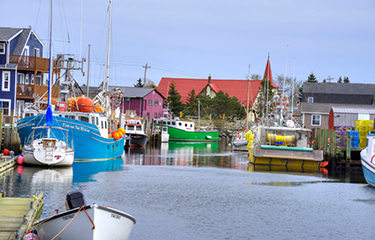The prospect for Canadian fish populations is dim, a new audit says, with fewer stocks healthy today than two years ago and plans in place to rebuild just six of the country’s 33 depleted stocks.
Oceana Canada's 2019 fishery audit of 194 stocks relied on data from Canada’s Department of Fisheries and Oceans. It suggests that Canadian fishery managers aren’t working with the speed and urgency necessary to rebuild stocks, as required by amendments to the country's fisheries act that were passed this summer. The proportion of stocks in a critical state rose from 13 percent two years ago to 17 percent today, while the proportion of healthy stocks fell from 35 percent to 29 percent today.
In addition, Oceana faced a dearth of data, which prevented the nonprofit from determining the health of 38 percent of stocks – an increase from previous years – yet another indication that good management measures are lagging.
"We have an obligation to sustainably manage if we're going to harvest a fish stock and if we don't have information we've got to take other approaches and minimize mortality until we're not fishing in the dark," Oceana Canada Science Director Robert Rangeley told SeafoodSource. "Given the backlog and current rate of putting in place the reference points and the rebuilding plans, it's going to take decades to get through the backlog, which is not a workable option."
Most of the 33 depleted stocks are on Canada's Atlantic coast, and many are groundfish, including the northern cod, which infamously collapsed in the early 1990's and doesn't yet have a rebuilding plan. Forage fish such as herring and mackerel are also in the critical zone, with potentially profound consequences for both fisheries and the broader marine ecosystem.
At the same time, the number of crustaceans that are depleted has increased, especially on the Pacific coast. Scotian Shelf snow crab and three Pacific shrimp stocks moved into the critical zone, making the total number of depleted crustaceans seven, compared to just one stock two years ago. Crustaceans are especially valuable to Canadian fisheries, with shrimp, snow crab, and lobster making up 73 percent of fisheries landings — approximately CAN 3.8 billion (EUR 2.6 billion, USD 2.9 billion).
"It is unacceptable to have so many critical stocks ... What we know is the longer stocks remain in the critical zone and the further they're depleted, the harder it is for stocks to rebound," Rangeley said. "What we really need to do is put in place rebuilding plans and work to minimize the amount of human-caused mortality — that's all we can control — for those stocks, and then have reference points, where we have a target for the level at which a stock meets the healthy zone."
The audit noted that there were improvements between 2018 to 2019 in two stocks that went from cautious status to healthy: Icelandic sea scallops around the Magdalen Islands and Pacific halibut.
Management of stocks has also improved in some ways, with the number of stocks including individual fishery management plans going from 71 percent two years ago to 90 percent today, and the number of critical stocks with rebuilding plans increasing from 12 percent to 18 percent in the same period.
The number of stocks that are subject to some level of at-sea monitoring has increased, too, rising from 71 percent two years ago to 84 percent today. The number of stocks with mandatory logbooks has also increased from 83 percent two years ago to 96 percent today.
Canada's modernized fisheries act took effect in June 2019, and for the first time required plans to rebuild depleted fish populations – plans that will take time to create. The government has allocated more than CAD 100 million (USD 75.2 million, EUR 68.2 million) to restore fish populations over the next five years.
The Fisheries Council of Canada, a group that represents Canada’s fish and seafood industry, advocated for more resources to be allocated to DFO to conduct fisheries science, such as stock assessments.
"We were pleased that DFO did receive additional funding," Council President Paul Lansbergen told SeafoodSource. "It is too early yet to say whether that funding is sufficient to close the gap."
The council took a cautious view of the amendments to the act, which authorized some 15 new regulatory instruments to be developed in the coming years.
"The details are in the regulations, not the legislation," Lansbergen said.
Lansbergen cautioned that fishery regulators can’t be blamed for all unhealthy fish stocks, since natural mortality can be beyond their control.
"Looking solely at the audit, you might forget that Canada does a pretty good job sustainably managing its fish resources. On top of that, the industry is a world leader in adoption of third-party certification,” Lansbergen said. “Two-thirds of our fisheries are certified compared to the global average of only 14 percent.”
Photo courtesy of Juli Scalzi/Shutterstock







